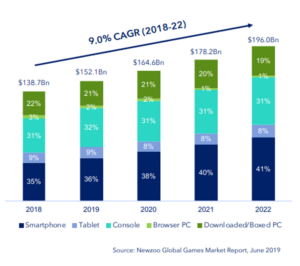How Can Long-Term Value Investors Make the Most of This Week’s Short-Term Volatility?
Andrew and I just did a podcast about volatility. And, of course, when we say “volatility” I want to remind everyone that’s a codeword for “downside volatility”. Nobody minds upside volatility. There are basically two topics worth discussing when it comes to volatility and how you as an investor should behave. One is how to “handle” volatility – psychologically and such. The other is how to take advantage of volatility. If we go back and think about Ben Graham’s Mr. Market metaphor – it’s really all about volatility. Mr. Market’s existence really only benefits you if he is giving you wildly different quotes over some period of time. Sure, it doesn’t have to be day-to-day. But, if all stocks are rising by similar, gradual amounts over time – a public quote for your shares doesn’t give you much benefit in selling one thing and buying another. You need either relative moves among stocks – where you own an airline stock down a lot and a healthcare stock that’s rising in price – or you need very different quotes on the same stock depending on the day. There’s an old article (but a good one) up on the Focused Compounding site that talks about the concept of “value trading”. This is where a value investor owns maybe 5 stocks he really likes for the long-run. But, in any given year – one of these stocks will rise a lot closer to his estimate of intrinsic value while others will fall. For example, Warren Buffett’s stock portfolio at Berkshire Hathaway rose something like 40% last year. Obviously, the underlying business’s earnings power barely budged. Maybe it rose 5%. Maybe not even that. You’ll notice that Berkshire’s wholly owned businesses didn’t have any increase in their operating earnings. I think Berkshire’s partially owned businesses did a lot better. But, they didn’t do 40% better. So, in a year like that, you have some of your stocks rising a lot closer to your estimate of intrinsic value while others don’t. The obvious example at Berkshire of a stock that rose far faster than its intrinsic value last year would be Apple (AAPL).
Now, Buffett can’t “value trade”. Or, at least, he shouldn’t try to. Buffett has to put more and more cash to work each month, quarter, and year. If he sells any of his Apple stock – he has to find somewhere else to put it. And, because he owns such big chunks of the public companies he’s in – that’s a problem. This is a problem even for much smaller investors. Andrew and I run a fund where we have allocations to specific stocks that are in part based on how much of the fund we’d like in those stocks – but, also partially based on simply how much of those stocks we can own. This issue mostly crops up when a fund has more assets under management than the market cap – or, at least, the “float” – of the company …
Read more
